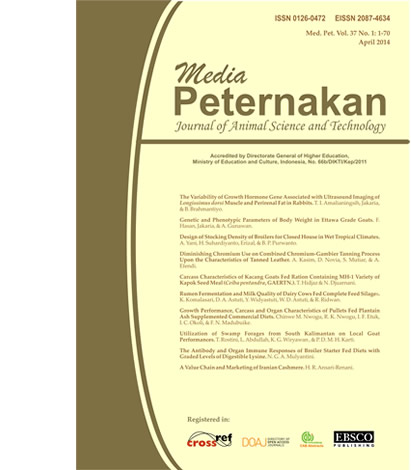Growth Performance, Carcass and Organ Characteristics of Pullets Fed Plantain Ash Supplemented Commercial Diets
Abstract
The main objective of this study was to compare the effects of different plantain ash sources (plantain root base ash (PRA) and plantain stalk ash (PSA) supplementation on the performance of pullets fed commercial diets. Ninety six Isa brown pullets aged 15 weeks were therefore used to assess the effect of supplementing commercial diets with plantain root base (PRA) and stalk ashes (PSA) on growth performance, carcass and organ characteristics of pullets during 4 weeks before point of laying (19 weeks of age) and 6 weeks of laying period (25 weeks of age). The pullets were divided into two groups of 48 each for supplementation with either PSA or PRA. Each group was divided into four groups of 12, which were further replicated 3 times with 4 birds per replicate in a completely randomized design. At each developmental stage, the feed offered to the birds was supplemented with 0 (control), 1, 2, and 3 g/kg body weight of PSA or PRA. One g/kgBW of PRA supplementation elicited observable growth performance effects on the birds, while for PSA it was 2 g/kgBW. The 2 g/kgBW PSA supplemented birds gained significantly (P<0.05) more weight than the other groups except the control, which consumed significantly (P<0.05) more feed. At point of laying, the 1g/kgBW PRA group recorded significantly (P<0.05) higher body weight and weight gain than the control. Plantain root base ash affected dressing percentage significantly (P<0.05) resulting in higher thigh weights, while organ weights decreased with increasing ash supplementation levels. Plantain ash therefore has positive effect on growth and edible carcass cut.
Key words: plantain ash, pullets, feed, carcass



